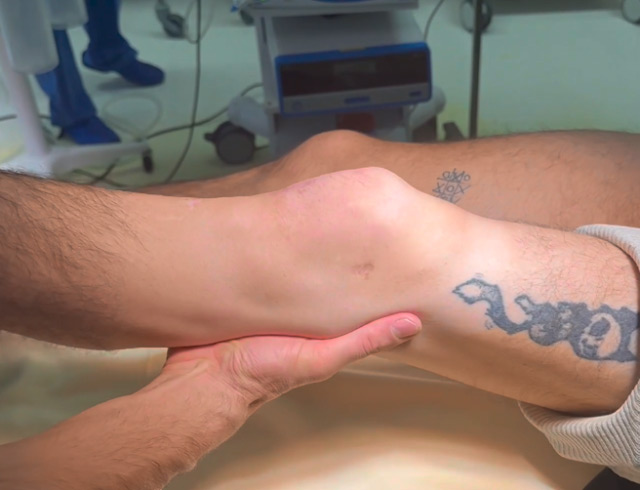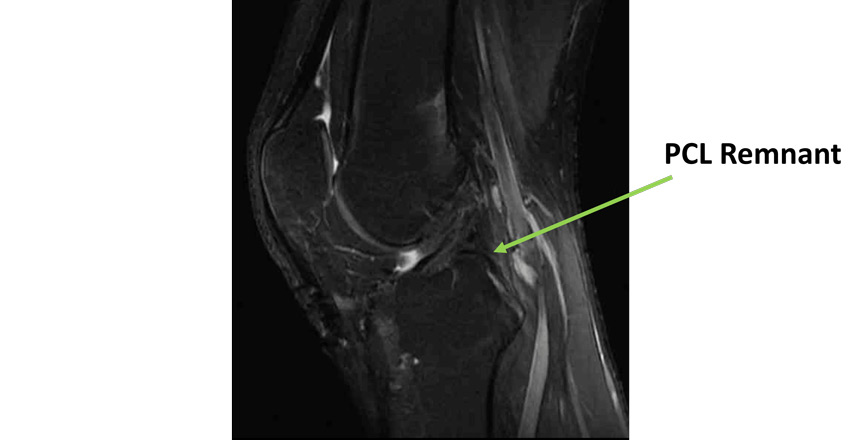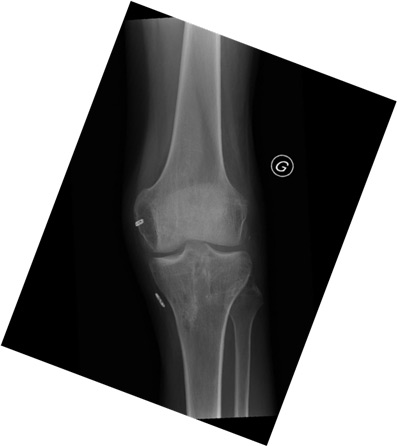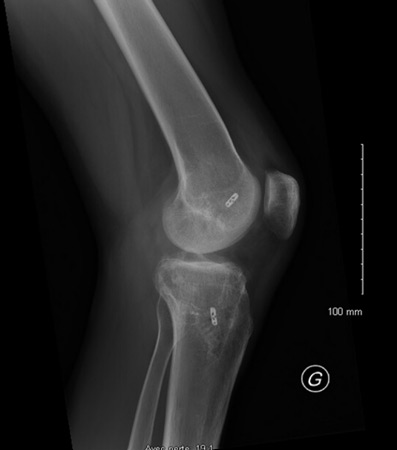Knee
ACL
Multi ligament
Sport related injury
Management of a chronic multiligament knee injury
In this clinical case involving a 24-year-old patient, we explore the various physical examination tests used to assess a multiligament knee injury. What is the most appropriate surgical treatment, and how should post-operative rehabilitation be managed?
Part one
Clinical presentation
- Patient : 24-year-old male patient , farmer
- Mechanism of injury: High-Energy trauma ( Motorcycle Accident)
- Initial Injury: knee sprain without associated fractures
- Initial treatment: Knee Brace Immobilization for 6 weeks, followed by physiotherapy
- The patient presented to our hospital 6 months later with persistent daily knee joint instability
Pre-op Testing
- Varus Stress Test: varus laxity at 0° and 30°of knee flexion
- Valgus Stress Test: Absence of valgus laxity at 0° and 30° of knee Flexion

Pre operative MRI
- Knee X-ray: No fractures or bony avulsion
- Knee MRI Findings:
- Rupture of the PCL, PLC and LCL
- Intact ACL
- No meniscal tear
- No cartilage injury



Part two
Which test(s) should be positive at the physical examination?
- ✔️Dial Test
- ✔️Hughston
- ✔️Posterolateral Rotatory Drawer Test
- ✔️Posterior Drawer Test
What is a positive dial test and what structure is affected when positive?
- ✔️>10° external rotation asymmetry at 30° of flexion, PLC lesion
- ✔️>10° external rotation asymmetry at 90° of flexion, PCL lesion
Final strategy decision
One stage reconstruction of chronic PCL , PLC and LCL ruptures
- Arthroscopic reconstruction of the PCL and PLC is performed via a trans-septal approach, using a pedicled semitendinosus autograft for the PCL and an extensor hallucis longus allograft for the PLC
- LCL reconstruction is performed using a percutaneous technique with a gracilis tendon autograft
- Graft Tensioning sequence:
- Tighten the PCL graft with the knee in 90° flexion and maximum anterior drawer.
- Tighten the PLC graft with the knee in 90° flexion, maximum anterior drawer, and internal rotation.
- Tighten the LCL graft at 30° of flexion with moderate valgus stress.
video
Post-op X-rays


Post-operative Rehabilitation
- Immobilization using hinged PCL dynamic brace for 12 weeks with no weight bearing for the first 6 weeks.
- Full knee range of motion exercises was allowed immediately post operatively
- Early activation of the vastus medialis muscle was initiated to support quadriceps function
- No hamstring strengthening exercises for the first 12 weeks
References
- All-Arthroscopic Treatment of Combined Posterior Cruciate Ligament and Posterolateral Corner Instability
Felipe Galvão Abreu, Benjamin Freychet, Thaís Dutra Vieira, Lampros Gousopoulos, Charles Grob, Yoann Levy, Graeme P Hopper, Bruce A Levy, Bertrand Sonnery-Cottet Arthrosc Tech. 2022 May 11;11(6):e977-e982. doi: 10.1016/j.eats.2022.01.018. eCollection 2022 Jun. - Combined Anatomical Arthroscopic Posterior Cruciate Ligament and Posterolateral Corner Reconstruction Using a Knotless Anchor: A Simplified Approach
Ali Alayane M.D., David Zhu M.D., Dany Mourbes M.D., Leo Estivols M.D., Etienne Cavaignac M.D., Ph.D. Knee - Percutaneous Lateral Collateral Ligament Reconstruction
Bancha Chernchuitt, Panin Anilaboll, Vitorio Nicolas F Malonzo Arthrosc Tech. 2020 Oct 16;9(10):e1577-e1580. doi: 10.1016/j.eats.2020.06.023. eCollection 2020 Oct. - All-Arthroscopic Popliteus Tendon Reconstruction With Dual-Posterolateral Portal Technique
Steven Heylen M.D., Matthias Krause M.D., P.D., Peter Verdonk M.D., Ph.D., Jozef Michielsen M.D., Ph.D. Knee Technical Note - A modified Larson's method of posterolateral corner reconstruction of the knee reproducing the physiological tensioning pattern of the lateral collateral and popliteofibular ligaments
Yasuo Niki, Hideo Matsumoto, Toshiro Otani, Hiroyuki Enomoto, Yoshiaki Toyama, Yasunori Suda Sports Medicine, Arthroscopy, Rehabilitation, Therapy & Technology. 4, Article number: 21 (2012) - Anatomic Posterolateral Corner Reconstruction Using Semitendinosus and Gracilis Autografts: Surgical Technique
Santiago Pache, Martín Siena, Diego Larroque, Rodrigo Talamás, Zachary S Aman, Eduardo Villesky, Robert F LaPrade Arthrosc Tech. 2021 Jan 16;10(2):e487-e497. doi: 10.1016/j.eats.2020.10.033. eCollection 2021 Feb. - Anatomic posterolateral corner knee reconstruction
Robert A Arciero Arthroscopy. 2005 Sep;21(9):1147. doi: 10.1016/j.arthro.2005.06.008. PMID: 16171645. - The docking technique for posterolateral corner reconstruction
Nikhil N Verma, Kai Mithofer, Michael Battaglia, John MacGillivray PMID: 15689876. DOI: 10.1016/j.arthro.2004.09.030.

